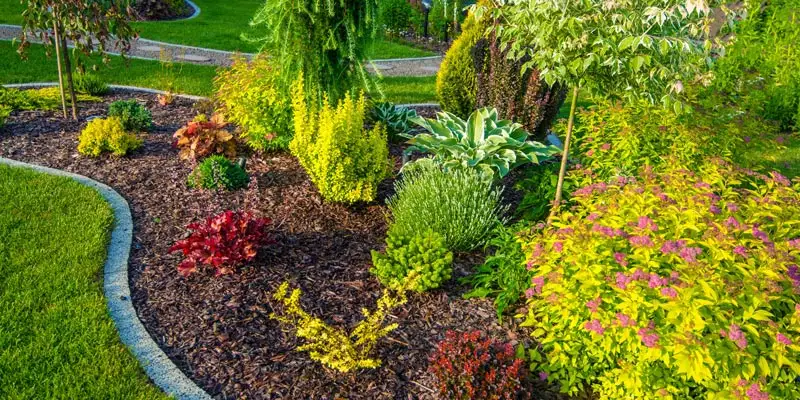Getting My Landscape Design To Work
Getting My Landscape Design To Work
Blog Article
Things about Landscape Design
Table of ContentsThe Facts About Landscape Design RevealedSome Known Facts About Landscape Design.Not known Facts About Landscape DesignSome Ideas on Landscape Design You Need To Know
When making a residential landscape, one of the most essential step is to put a strategy on paper. Establishing a plan of attack will conserve you money and time and is much more likely to cause an effective layout. A master plan is established through the 'layout process': a detailed technique that considers the ecological conditions, your needs, and the components and principles of layout.The 5 steps of the design procedure consist of: 1) carrying out a website inventory and analysis, 2) determining your requirements, 3) creating practical diagrams, 4) developing theoretical layout plans, and 5) drawing a last layout plan. The first 3 actions develop the visual, functional, and horticultural demands for the layout. The last 2 steps after that use those requirements to the creation of the final landscape strategy.
This is an essential step for both plant option and placement and finding family tasks and features. It is necessary due to the fact that the same climate problems that affect the plantstemperature, humidity, rain, wind, and sunlightalso impact you, the individual. The following step is to make a checklist of your requirements and desiresthis helps you determine exactly how your backyard and landscape will certainly be used.
The functional diagram is then utilized to find the activity rooms on the site and from this representation a conceptual strategy is established. The last step is a final design that consists of all the hardscape and planting details that are essential for installation. Throughout the style procedure there are ten vital points to consider: for plant selection and task place by considering what you want and need to assist determine forms and organize areas by assigning activity locations and connecting with elements for both the atmosphere and the user by using massing and layering techniques such as shift areas and centerpieces in the materials, the colors, and the surface area textures for the development and upkeep of plants by utilizing lasting style methods A complete stock and analysis of the website is necessary to figure out the environmental problems for plant growth and the best use of the site.
The Facts About Landscape Design Revealed
It is constantly best to use plants that will certainly flourish in the existing soil. Where plants grow well, note the soil problems and utilize plants with similar growing needs.

Sun/shade patterns, the amount and size of exposure to sun or shade (Number 1), create microclimates (occasionally called microhabitats) - Landscape Design. Recording site problems and existing vegetation on a base map will reveal the area of microclimates in the lawn. Plants generally drop right into 1 or 2 of four microclimate categories-full sunlight, partial shade, color, and deep shade
What Does Landscape Design Do?
Figure 1. Sun and color patterns. Debt: Gail Hansen, UF/IFAS It is vital to note all the present problems on an exact base map when doing the site stock (Number 2). Utilities such as power lines, sewage-disposal tanks, underground energies and roofing overhangs figure out plant area. Use a land surveyor's plat of your home for the limits and area of your home.


Figure out the time and cash you are prepared to put right into keeping the plants and hardscape-be sensible concerning your intentions and ability. Proposed usage locations. Credit Rating: Gail Hansen, UF/IFAS There are several various landscape design motifs- from basic to complex, but it is useful to pick one to lead your plant and product selection.
Lots of individuals discover it practical to search in gardening publications and publications for concepts. This is an excellent beginning, however understand that the gardens in the images were selected because they are superior examples. Take find a look at the images with a vital eye to collect concepts that you can adjust to your interest level, your budget plan and your site.
Choose if you wish to open your yard, see here now close your backyard, or a little of both, to these views (Landscape Design). Simply put, do you desire the garden to confine the space around you and connect primarily to your home, or do you desire the garden to open views and look external, associating with the environments? This will certainly give you a beginning indicate consider a motif
What Does Landscape Design Do?
This is called "local color", which suggests it fits with the environments. There are both form motifs and design themes. Every yard must have a form motif, but not all yards have a style theme. As a matter of fact, many household gardens have no particular design other than to blend with the home by duplicating details from the architecture such as materials, shade, and form.
In a type motif the company and shape of the rooms in the lawn is based either on the form of your house, the shape of the areas between your home and the home boundaries, or a favored form of the homeowner. The kind style identifies the shape and organization (the design) of the more helpful hints rooms and the links between them.

Report this page